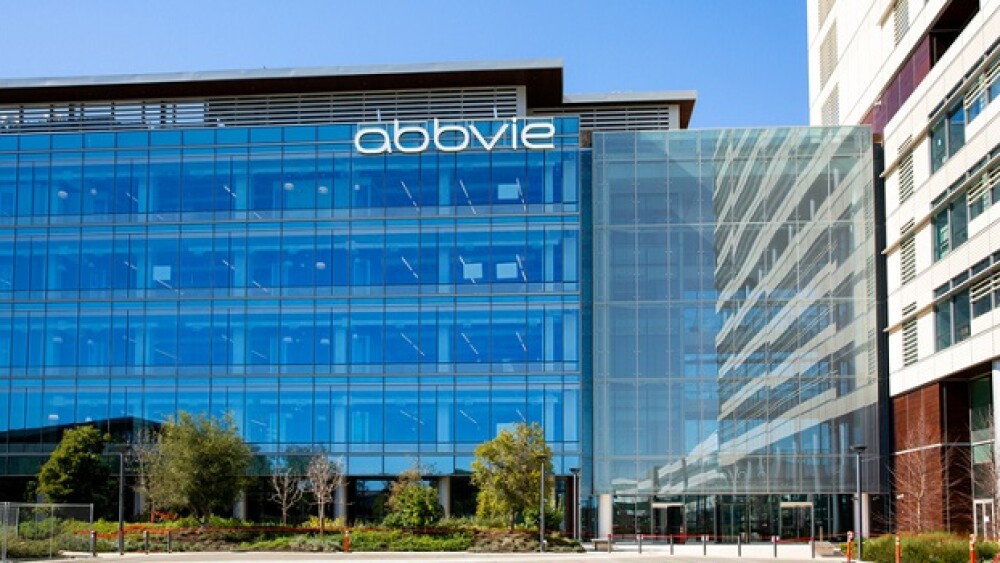While Amgen and Mirati are widely viewed as frontrunners to win the first front line approval, analysts—and competitors—say the field is still wide open.
Pictured: A red, blue and purple racecar zip around a track shaped like lungs/Nicole Bean for BioSpace
With Amgen’s Lumakras and Mirati’s Krazati already approved for the second-line treatment of KRAS-mutated non-small cell lung cancer, the longtime competitors—along with newer contenders—are vying to bring the first KRAS inhibitor to the frontline.
As second-line treatments, Lumakras (sotorasib) and Krazati (adagrasib) have mostly been used for sicker patients. Now, their makers need to prove that they can effectively replace chemotherapy.
“First line is always going to be challenging because you have to displace standard of care and show a particular safety profile … and there’s any number of logistical challenges [with] moving a drug into the front line,” said Mara Goldstein, managing director and biotechnology analyst with Mizuho. However, she said, “The drugs are getting better because the ability to design these molecules has only improved, and the ability to select patients and conduct the trials will also improve over time. This is a very unwritten story.”
Lumakras and Krazati deal specifically with the G12C mutation within the KRAS oncogene. This gene encodes the K-Ras protein, which plays a crucial role in regulating cell growth and division. When the KRAS gene undergoes the G12C mutation, it can lead to the production of a defective K-Ras protein that remains continuously active. Consequently, cells grow and divide uncontrollably, ultimately causing cancer. This mutation is frequently observed in various cancer types, including lung, colorectal and pancreatic.
A High Burden of Proof
KRAS inhibitors are aimed at certain populations with clear biomarkers. Lung cancer is the second most commonly diagnosed cancer worldwide, with 85% of those cases being NSCLC. Around 20% to 25% of NSCLC patients have a KRAS mutation, with approximately 11% of patients having the KRAS G12C mutation.
So the affected population is large and the market potential is high. In fact, a recent GlobalData forecast puts the total market for KRAS-targeting cancer drugs at over $4 billion by 2029. But moving from second line to first line with a larger, healthier patient population will be more difficult than gaining second-line approval was, Goldstein told BioSpace.
“The responsiveness that we’ve seen in second line is modest and has come down [in the clinical trials],” she said, adding that the natural response rate in the first line setting is still unknown. The response rate in Amgen and Mirati’s early first-line trials was 35% to 45%, she noted, “But when you combine that with standard care, it’s unclear how much incremental benefit you get. [Companies] have to be able to show the incremental benefit on top of [standard care].”
Both Amgen and Mirati recently published promising first-line data. In September, Amgen announced Phase I results showing that Lumakras led to a confirmed objective response rate (ORR) of 65% with a 100% disease control rate. A month later, Mirati published Phase II data showing an ORR of 63% and an 84% disease control rate. The company is now moving ahead to Phase III trials.
Piper Sandler Biotechnology Analyst Joseph Catanzaro told BioSpace that once supportive first-line data are available, he expects that Roche and Novartis, among other companies, will join the race to the front line, but that exactly how they go about this “is still to be decided.”
In a Phase I study reported in August, Roche’s divarasib elicited a “durable response” in 60 NSCLC patients treated, with more than 53% responding to the drug. Median progression-free survival was 13.1 months. Meanwhile, Novartis is studying JDQ443 in Phase II trials.
Lumakras Vs. Krazati
Catanzaro noted that Amgen has recently struggled with study design and toxicity issues
Mirati’s Phase II trial uses an add-on design of Krazati plus Keytruda vs. Keytruda alone, which Catanzaro said simply asks Krazati to provide additive benefit. Meanwhile, Amgen is using a “swap in” design for its Phase III Codebreak 202 trial, where the control group receives Keytruda (pembrolizumab) plus chemotherapy and the experimental group is given Lumakras plus chemotherapy. This, in theory, is a much more challenging trial and development strategy “because you’re asking sotorasib to replace pembrolizumab, and pembrolizumab is considered a pretty active component of the pembro-chemo combo,” Catanzaro said. “Essentially, Amgen’s trial is designed where sotorasib has to be better than pembrolizumab, while Mirati’s trial is designed where adagrasib has to be better than placebo. [It] should be easier to beat [a] placebo than an active agent.”
On the safety front, fewer adverse events were seen with the Krazati/Keytruda combination than in Amgen’s CodeBreaK 100/101 trial. Treatment-related hepatic events with Krazati occurred in less than 10% of patients treated with Krazati plus Keytruda and were predominantly low grade. In contrast, Lumakras plus chemo elicited grade 3 or 4 hepatotoxicity levels of 37% in CodeBreaK 100/100, according to a French review of the study.
Bristol Myers Squibb’s recently announced acquisition of Mirati is also likely to bolster its program, Goldstein noted, as a large company has multiple modalities and the ability to create combinations within its own portfolio.
Catanzaro echoed this sentiment, saying that although BMS hasn’t directly addressed this, using Krazati with its own internal PD-1 inhibitor, Opdivo (nivolumab), rather than Keytruda, would be a sound strategic decision.
Lilly’s Dark Horse Candidate
But Jake Van Naarden, president of Eli Lilly’s oncology unit, Loxo@Lilly, told BioSpace he doesn’t believe either Krazati and Lumakras will be first to reach the front line in KRAS-mutated NSCLC.
“They’re not that efficacious,” he said. “Patients don’t stay on them that long. They’re not even particularly well tolerated.”
Van Naarden said that while the two drugs generated excitement for their ability to treat an “undruggable” target, there has been disappointment around what he called their limited benefit. He added that combining Lumakras and Krazrati with Keytruda has proven to be very challenging—in Lumakras’ case due to rate-limiting liver toxicity.
While Lilly’s KRAS G12C inhibitor, LY3537982, only began Phase I trials in July 2021, Van Naarden said the later entry has allowed the company to avoid repeating mistakes made by Amgen and Mirati and to essentially catch up.
“Combining those medicines with pembrolizumab has been so challenging that a lot of time has been sort of wasted . . . trying to figure out what the first line strategy for these agents ought to be,” he said, adding that he doesn’t believe the Amgen program is moving ahead in a material way in newly diagnosed lung cancer. Van Naarden said he believes Lilly’s program is on par with Mirati’s in the first-line setting.
Early clinical data from Lilly’s Phase I trial did not reveal the same toxicities its competitors have struggled with, Van Naarden said, noting that this could be because LY3537982 is more potent.
“Potency is really measured in the context of the rate at which you inactivate your target, and we inactivate the target much more quickly than the other agents,” he said. “As a result, we’re able to administer a much lower absolute dose of medicine to achieve the same degree of target inhibition. If we can achieve the same amount of target inhibition with meaningfully less drug, we think that’s a winning strategy for solving the tolerability concerns and issues that have dogged this class.”
Catanzaro, however, still sees Mirati as the leader in this race. “I think Mirati is the best position currently within first-line lung cancer, given the data they’ve generated [and] their early Phase III strategy,” he said.
Mollie Barnes is a freelance science writer based in Los Angeles. Reach her at mollie@100yearsco.com. Follow her on Threads and Instagram @shejustlikedtogo and see more of her work at molliebarnes.contently.com.








